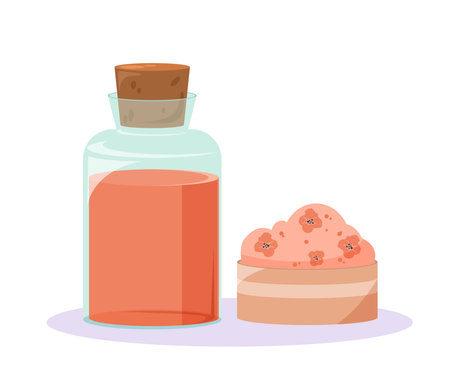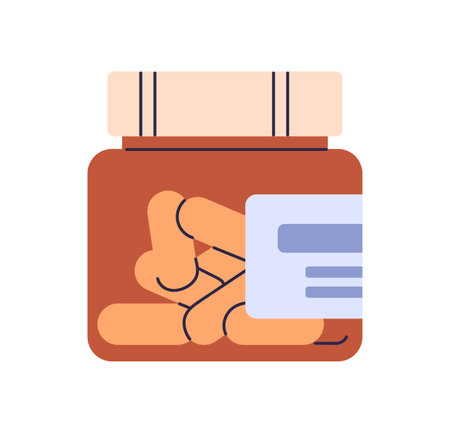Understanding Cellulite: What It Really Is
When we talk about cellulite, especially in India, there are many myths and misconceptions floating around. Lets break it down together—cellulite is not a disease or a result of poor hygiene. In simple words, cellulite is the dimpled or lumpy appearance that often shows up on the thighs, hips, buttocks, and sometimes even the stomach. Both men and women can have it, but it is more common among women due to differences in fat distribution, muscle, and connective tissue.
How Does Cellulite Form?
The main reason behind cellulite is the way fat cells push up against the skin while fibrous connective cords pull down. This creates an uneven surface or those classic “orange-peel” dimples. For us South Asians, our skin structure and body type may make these dimples appear more noticeable due to softer connective tissues and genetic predisposition.
Why Is It So Common Among Indians?
Cellulite isn’t just something you see in magazines or movies—it’s a reality for many Indians regardless of age or fitness level. Our traditional diets, hormonal changes (like during puberty, pregnancy, or menopause), sedentary lifestyles, and even stress levels can all play a role. Genetics also matter—a lot! If your mother or aunties have cellulite, there’s a good chance you might notice it too.
It’s Not Just a Women’s Issue
Contrary to popular belief, cellulite doesn’t only affect women. Men in India are also susceptible—though usually less noticeable because of different fat and muscle distribution. But yes, Indian men dealing with hormonal changes or weight fluctuations may spot cellulite too.
So next time you look at your skin and worry about these little dimples, remember: cellulite is a natural part of our bodies—especially for us South Asians. Understanding what it really is can help us focus on facts rather than myths!
Busting Popular Myths in India
Cellulite is a topic surrounded by plenty of confusion in India. Many of us have heard things like “only people who are overweight get cellulite” or “cellulite means you don’t keep yourself clean.” Let’s address these common misconceptions and see what science and experience say, especially for us Indians.
Common Cellulite Myths vs. Facts
| Myth | Reality |
|---|---|
| Only overweight people get cellulite. | Even slim or fit people can have cellulite. It’s mostly about genetics, hormones, and skin structure—not just body weight. |
| Cellulite is a sign of poor hygiene. | This is not true at all. Cellulite is related to fat beneath the skin and how it interacts with connective tissue, not personal cleanliness. |
| Men do not get cellulite. | While it’s less common, men can also develop cellulite. The difference is mainly due to how male and female bodies store fat. |
| Cellulite happens only as you age. | Younger people can also experience cellulite. Age may make it more visible because of changes in skin elasticity, but it isn’t the only factor. |
| Applying oils and creams will completely remove cellulite. | No cream or oil can make cellulite disappear overnight. Some products may temporarily smoothen the skin, but lasting effects come from lifestyle choices and sometimes medical treatments. |
Why These Myths Are So Common in India?
In Indian society, there is often pressure to have “perfect” skin, especially for women. Bollywood movies and social media influencers usually showcase flawless bodies, making many believe that having cellulite means something is wrong. Family elders may also pass down old beliefs—like linking skin texture with cleanliness or health—which adds to the confusion.
The Takeaway for Indians
If you notice cellulite on your body, remember: it’s completely normal! It does not mean you are unhealthy or unclean. It simply means your body is unique—just like everyone else’s in our incredible, diverse country. Embracing facts over myths helps us feel better about ourselves and support each other with kindness and understanding.

3. Cellulite and the Indian Diet
When we talk about cellulite, most of us think it’s a “Western problem.” But let’s face it, even in India, orange-peel skin is something many of us notice—especially with changing eating habits and city lifestyles. So, how does our traditional Indian diet fit into this story?
From Dal-Chawal to Butter Chicken: Food Choices Matter
Our classic meals like dal-chawal, roti-sabzi, or idli-sambar are rich in fibre and nutrients. Lentils, fresh veggies, and whole grains can help support healthy skin by promoting good digestion and reducing inflammation. But, as we move towards more processed foods—think instant noodles, chips, cheesy pizzas—the risk of developing or worsening cellulite goes up. Why? These foods are often high in salt and unhealthy fats, which make your body hold onto water and can make dimpling look more obvious.
Spices: More Than Just Flavour
India is famous for its spices—turmeric, ginger, cumin—all known for their anti-inflammatory powers. Adding these regularly to your diet may help keep your skin healthier from the inside out. Turmeric milk (haldi doodh), anyone? However, piling on too much oil or cream (like in rich curries or mithai) might do the opposite by adding extra calories and saturated fats that could contribute to fat storage under the skin.
Modern Lifestyles: The Double-Edged Sword
Urban Indians today are juggling busy jobs, long commutes, and less physical activity. Swapping home-cooked meals for takeaways or skipping meals altogether can disturb metabolism and contribute to weight gain—and yes, more visible cellulite. Even stress from our fast-paced lives may play a role by messing with hormones related to fat storage.
So What Can You Do?
It’s all about balance! Embrace traditional Indian foods packed with veggies and pulses while cutting back on overly salty snacks and creamy dishes. Stay hydrated with water or nimbu pani instead of sugary sodas. And don’t forget regular movement—be it morning yoga or an evening walk around your colony.
In short, your plate has a big say in how cellulite appears—and sticking to time-tested Indian food wisdom (with a modern twist) can help you manage it better.
4. Lifestyle Factors Unique to Indians
If you live in India, you already know our lifestyle is a mix of fast-paced city life, traditional values, and unique health practices. When it comes to cellulite, these factors play a big role—sometimes in ways we don’t expect! Let’s break down the Indian context.
Sedentary Urban Jobs
Many of us work IT jobs or spend hours at the office, often glued to our chairs with minimal movement. Sitting for long periods can slow down blood circulation and make cellulite more noticeable, especially on thighs and hips. Even in metro cities like Bengaluru or Mumbai, lack of daily physical activity is a common issue.
Stress from Competitive Exams
From board exams to CAT and UPSC, Indian students face immense pressure. Stress leads to hormonal changes that can affect fat storage and skin health, sometimes making cellulite worse. Let’s be honest, the stress-eating during exam season doesn’t help either!
Popular Home Remedies: Are They Effective?
Indian families love home remedies—be it haldi (turmeric) packs or coffee scrubs. While some ingredients may improve skin texture temporarily, there’s no magic “daadi maa ka nuskha” (grandmothers remedy) that erases cellulite overnight.
| Remedy | Common Belief | What Science Says |
|---|---|---|
| Coffee Scrub | Reduces cellulite by exfoliation | May improve appearance briefly by tightening skin |
| Turmeric Paste | Improves skin tone and texture | No evidence for reducing cellulite directly |
| Coconut Oil Massage | Smoothens skin, removes dimples | Makes skin soft but does not remove cellulite |
The Role of Yoga and Ayurveda
Yoga is not just an exercise; it’s part of Indian identity! Poses like Surya Namaskar or leg lifts boost circulation and muscle tone, which can reduce the appearance of cellulite. Ayurveda offers herbal oils for massage (like Triphala oil) and detox diets. While these methods might help your overall wellness, remember that consistency matters more than any single product or pose.
Summary: Indian Lifestyle & Cellulite Connection
The Indian way of life has both challenges and unique solutions when it comes to cellulite. Understanding what truly works—and what’s just a myth—can help you make better choices for your body and confidence.
5. Popular Treatments and What Actually Works
Creams: Do They Deliver Results?
In India, there are plenty of over-the-counter creams promising to reduce cellulite. From ayurvedic blends featuring tulsi and turmeric to international brands with caffeine or retinol, the choices are endless. However, both dermatologists and local users often agree—most creams offer only temporary results. They might hydrate your skin and make it appear smoother for a while, but the underlying fat structure causing cellulite doesn’t really change. So, if you’re hoping for a miracle cream from your nearest chemist shop or online store, it’s best to manage expectations.
Massages: Traditional Indian Techniques vs Modern Methods
Indians have long believed in the power of massages for health and beauty. Traditional abhyanga (oil massage) using coconut or sesame oil is common in households. Some locals swear by vigorous self-massage or using a dry brush in upward strokes before bathing. These methods can boost blood circulation and temporarily improve skin texture. Salon treatments like lymphatic drainage massage or anti-cellulite massage using special rollers are also gaining popularity in urban centres like Mumbai and Bengaluru. While massages can help skin look firmer for a short time, scientific studies show they won’t completely erase cellulite—but they do offer relaxation and a pampering experience!
Salon Treatments: The Glamour Factor
Beauty salons across India now offer treatments such as body wraps, ultrasonic therapy, and RF (radio frequency) sessions targeting cellulite. Some spas even blend Indian herbal pastes with Western gadgets! Customers often report feeling smoother skin after several sittings, but again, the effects are mostly short-lived unless maintained regularly. It’s important to choose reputable salons that maintain hygiene standards and use certified products.
Doctor-Led Procedures: The Science-Backed Solutions
If you’re looking for longer-lasting results, dermatologist-led treatments such as laser therapy, subcision (minor surgery), or injectable fillers are available in cities like Delhi, Hyderabad, and Chennai. These options come with a higher price tag but have more scientific backing. Many Indian doctors recommend combining lifestyle changes—like regular exercise and a balanced diet—with these procedures for best results. Always consult a qualified professional who understands Indian skin types before opting for these advanced treatments.
What Locals Say vs What Science Says
Many Indians still trust home remedies passed down through generations—like coffee scrubs or gram flour (besan) masks—for smoother thighs and hips. While these DIY solutions can offer some exfoliation and temporary glow, experts remind us that genetics, hormones, and lifestyle play the biggest roles in cellulite formation. In summary, there’s no one-size-fits-all cure; mixing traditional wisdom with modern science—and realistic expectations—is the Indian way forward when tackling cellulite.
Body Positivity and Indian Beauty Standards
When it comes to beauty in India, there is no denying the strong influence of Bollywood, glossy magazines, and even our own families. These sources often set unrealistic expectations—fair skin, slim bodies, and absolutely flawless skin with no cellulite. For many Indians, this pressure can feel overwhelming, especially when scrolling through social media where filters and editing apps are the norm. But let’s be honest: these standards rarely reflect real life or real bodies.
If you have ever felt self-conscious about cellulite on your thighs or arms, you are not alone. It’s completely natural! In fact, studies show that cellulite is extremely common among women of all backgrounds—yes, even celebrities who seem “perfect” on screen. Sadly, our society sometimes sees these natural features as flaws, making us believe we need to hide them or get rid of them at any cost.
It’s important to remember that our cultural ideals around beauty are always evolving. Historically, Indian art and literature celebrated diverse body shapes and sizes. However, today’s media often promotes a narrow definition of what is considered beautiful. This can lead to self-doubt and unnecessary stress over things like cellulite, which is just a normal part of how human skin stores fat.
The good news is that conversations around body positivity are growing in India. Influencers and public figures are beginning to show their real selves—cellulite and all—and encouraging others to do the same. Embracing body positivity does not mean ignoring health; it means valuing your body for what it can do rather than how it looks according to someone else’s standard.
So next time you catch yourself worrying about a little dimpled skin, remember: confidence is more attractive than perfection. Encourage your friends and family to focus on self-acceptance. Challenge those old stereotypes by celebrating your unique features—including cellulite! After all, true beauty shines from within.

